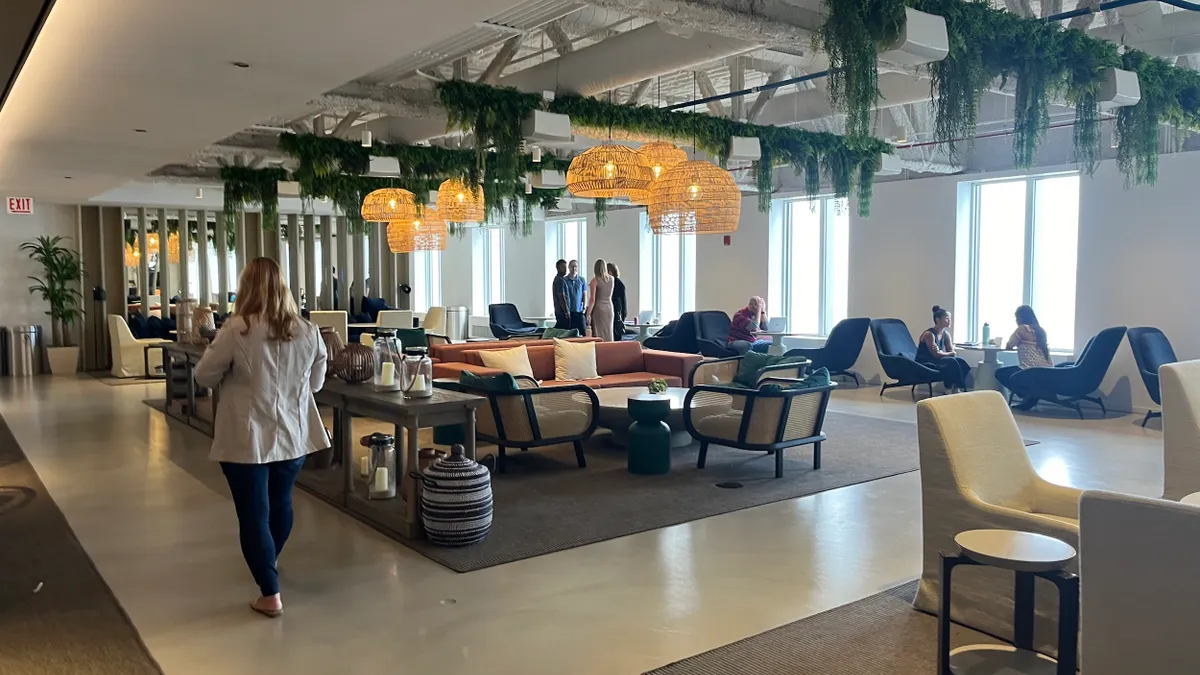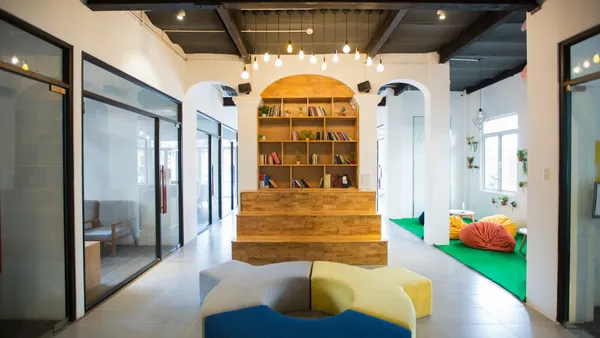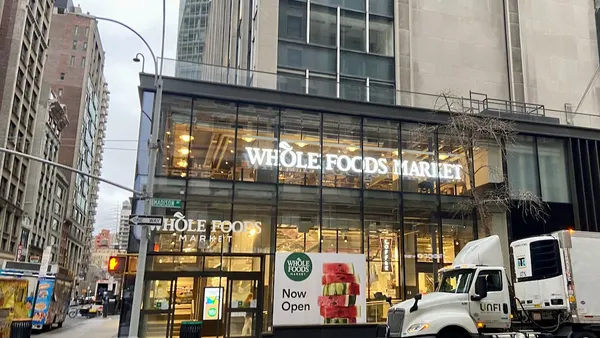Coworking space is growing across the office sector as uncertainty keeps stress on the economy, making flex spaces an alternative to costly, long-term office leases, according to a report by commercial real estate data firm Yardi Matrix.
The share of office space dedicated to coworking increased by 20 basis points year over year in September and now accounts for 2.1% of all office space nationwide, according to Yardi’s national office report released in October. The number of coworking spaces nationwide grew to 8,420 units, up 11.7% year over year, with the area of coworking space expanding 14% in that time to 152.2 million square feet.
“This growth has outpaced the rise in the number of coworking locations, resulting in a 2.1% year-over-year increase in the average size of a coworking space, now at 18,080 square feet,” Yardi Matrix said.
Coworking spaces are increasing for a number of reasons — including a growing interest in them as amenity space — but operators must be careful in how they roll out these spaces to users, says Colleen Werner, CEO of Playbook, a workplace experience firm that operates and advises on 50 million square feet of space across 18 U.S. markets for commercial real estate owners and players such as Hines, PGIM and CBRE.
“Coworking concepts in amenities spaces makes a lot of sense,” Werner said. “What doesn’t tend to work is when you try to shove a coworking experience into a non-coworking layout or form. There are very specific expectations that a user has when they’re paying for a coworking space.”
Werner recommends office facility and workplace managers introduce alternative revenue streams into their operations. While most of the spaces her firm advises on will drive alternative revenue on the events or meetings side, coworking space can also offer additional revenue when it’s marketed as “flex space” or a “spec-suite connected to an event,” she said. Operators notice they have a set of meeting and event spaces that can be pushed publicly out to the market on a regular basis, she said.
“There are the organic channels, where maybe it’s third-party integrations, like Peerspace or LiquidSpace, where we can make those spaces available,” Werner said. “And then there’s paid. And both of those drive different outcomes, depending on the market, depending on the neighborhood, depending on the block.”
Once a building landlord or operator models those outcomes, they can decide what strategy to deploy and how they will accomplish it. “Do we have the right technology to get a visitor or a guest into the space safely, without disrupting the tenants?” Werner said. “And then, what times do we allow it? We’re hosting weddings and baby showers and amenity spaces on the weekends. And again, it’s offsetting the tenants that aren’t there. They don’t know, and it’s offsetting what they’re paying for the best experience they can get in the market.”










